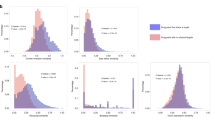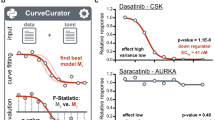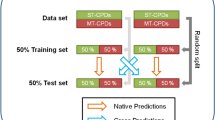Key Points
-
The term 'target' carries several connotations in the overall context of drug discovery. For example, disease-linked proteins are commonly referred to as targets, and target selection in a narrow sense could be taken to mean choosing between these.
-
However, here we consider 'target selection' in a broader sense — the decision to focus on finding an agent with a particular biological action that is anticipated to have therapeutic utility. In addition to the question “What is the disease target?”, questions such as “What is the scientific approach?” also need to be addressed. As such, strategic considerations are a crucial component of target selection.
-
Context is also important in target selection. An appropriate balance needs to be struck between stakeholders (investors), consumers (patients/doctors) and other modulating factors, such as legal factors (drug regulators) and political factors (potential payers).
-
To select a proposed research target, a range of issues need evaluation. Perhaps most important is what constitutes an improved medicine. It should be emphasized that better medicines can be obtained in two ways: either by enhancing therapeutic efficacy or efficiency.
-
These considerations lead to the categorization of innovative target-selection strategies into two subclasses:
-
The first can be termed a 'speculative research target' strategy, which represents cases in which the specific biological action sought has not been shown to have therapeutic utility at the inception phase of a research programme; the proof-of-utility of the approach can only be established by Phase II clinical trials.
-
The second can be termed 'innovative improvement', which is a research strategy of which the intention, at the inception phase of the research programme, is to improve on the performance of an agent whose biological activity is already known to have therapeutic utility.
-
Innovative improvement research targets are often underestimated in their utility, both by health consumer groups and regulatory bodies. Furthemore, the risks of the chosen target failing to show improved utility are inherently greater with the speculative research targets than with innovative improvement research targets.
-
Ultimately, there are two pivotal questions facing a research director in deciding whether to accept or reject a new research target. First, what is the probable risk and the likely financial return of the target? Second, will the project provide the Company with the right drug, for the right market niche, at the right time and at the right price?
-
To address these issues, three sets of criteria are commonly used: first, what is the probability of achieving the action(s) sought? Second, what is the probability of maintaining a competitive advantage with the proposed project? Third, what is the probable financial return?
-
To provide a framework for ensuring that the criteria for target selection are consistently applied and that there is transparency in articulating the assumptions underlying decisions about target selection, a range of modelling techniques, many of which are based on models used in predicting future performance in financial markets, have been applied to target selection in pharmaceutical companies.
Abstract
Target selection in drug discovery — defined here as the decision to focus on finding an agent with a particular biological action that is anticipated to have therapeutic utility — is influenced by a complex balance of scientific, medical and strategic considerations. In this article, we provide an introduction to the key issues in target selection and discuss the rationale for decision making.
This is a preview of subscription content, access via your institution
Access options
Subscribe to this journal
Receive 12 print issues and online access
$209.00 per year
only $17.42 per issue
Buy this article
- Purchase on Springer Link
- Instant access to full article PDF
Prices may be subject to local taxes which are calculated during checkout





Similar content being viewed by others
References
Jack, D. in Creating the Right Environment for Drug Discovery (ed. Walker, S. R.) 67–71 (Quay Publishing, Lancaster, 1991).
Yasuda, S. U. & Woosley, R. L. The clinical value of FDA Class C drugs approved from 1981–1988. Clin. Pharmacol. Ther. 52, 577–582 (1992).
Morgan, O. Glaxo mergers: the acid test. Observer (Lond.) (January 23, 2000).
Jones, R. H. An approach to pricing of innovative research-based medicine. Pharm. Med. 8, 29–38 (1994). An excellent overview that describes the approach used by research-based companies in identifying the right price for a new product.
Fitzgerald, J. D. Drug discovery and strategic marketing: the need to improve the connection. Drug Dev. Res. 43, 143–148 (1998).
Davis, L. UK biotech news short on quality. Scrips 2784 (2002).
Lander, E. S. et al. Initial sequencing and analysis of the human genome. Nature 409, 860–921 (2001).
Hopkins, A. L. & Groom, C. R. The druggable genome. Nature Rev. Drug Discov. 1, 727–730 (2002).
Drews, J. Drug discovery: a historical perspective. Science 287, 1960–1964 (2000).
Armstrong, K. A., Eisen, A. & Webber, B. Assessing the risk of breast cancer. N. Engl. J. Med. 342, 564–571 (2000).
Kitano, H. Systems biology: a brief overview. Science 295, 1662–1664 (2002).
Black, J. Future perspectives in pharmaceutical research. Pharm. Policy Law. 1, 85–92 (1999).
Balthasar, H. U., Boschi, R A. & Menke, M. M. Calling the shots in R & D. Harvard Business Rev. 151–160 (May–June) (1978).
Lockett, G., Hetherington, B., Yallup, P., Stratford, M. & Cox, B. Modelling a research portfolio using AHP: a group decision process. R&D Management. 16, 151–160 (1986).
Islei, G., Lockett, G., Cox, B. & Stratford, M. A. decision support system using judgemental modelling: a case of R&D in the pharmaceutical industry. IEEE Trans. Eng. Management 38, 202–209 (1991).
Phillips, L. D. A theory of requisite decision models. Acta Psychologica 56, 29–48 (1984).
Bogyo, M., Verhelst, S., Bellingard-Dubouchaud, V., Toba, S. and Greenbaum, D. Selective targeting of lysosomal cysteine proteases with radiolabeled electrophilic substrate analogs. Chem. Biol. 7, 27–38 (2000).
The management of pharmacology R&D Scrip Report p17 (PJB Publications, Richmond, 1990).
Acknowledgements
The authors would like to thank J. L. Vienne and D. Fitzgerald for their valuable input.
Author information
Authors and Affiliations
Corresponding authors
Related links
Glossary
- LIFE-STYLE MODIFYING DRUGS
-
For example, sildenafil for managing erectile dysfunction or anorectic drugs for obesity.
Rights and permissions
About this article
Cite this article
Knowles, J., Gromo, G. Target selection in drug discovery. Nat Rev Drug Discov 2, 63–69 (2003). https://doi.org/10.1038/nrd986
Issue Date:
DOI: https://doi.org/10.1038/nrd986
This article is cited by
-
Uropathogenic bacteria and deductive genomics towards antimicrobial resistance, virulence, and potential drug targets
International Microbiology (2023)
-
Evaluation of antiplasmodial activity in silico and in vitro of N-acylhydrazone derivatives
BMC Chemistry (2022)
-
Reactions of cisplatin and oxaliplatin with penicillin G: implications for drug inactivation and biological activity
JBIC Journal of Biological Inorganic Chemistry (2022)
-
Druggable hot spots in trypanothione reductase: novel insights and opportunities for drug discovery revealed by DRUGpy
Journal of Computer-Aided Molecular Design (2021)
-
A deep learning-based method for drug-target interaction prediction based on long short-term memory neural network
BMC Medical Informatics and Decision Making (2020)



